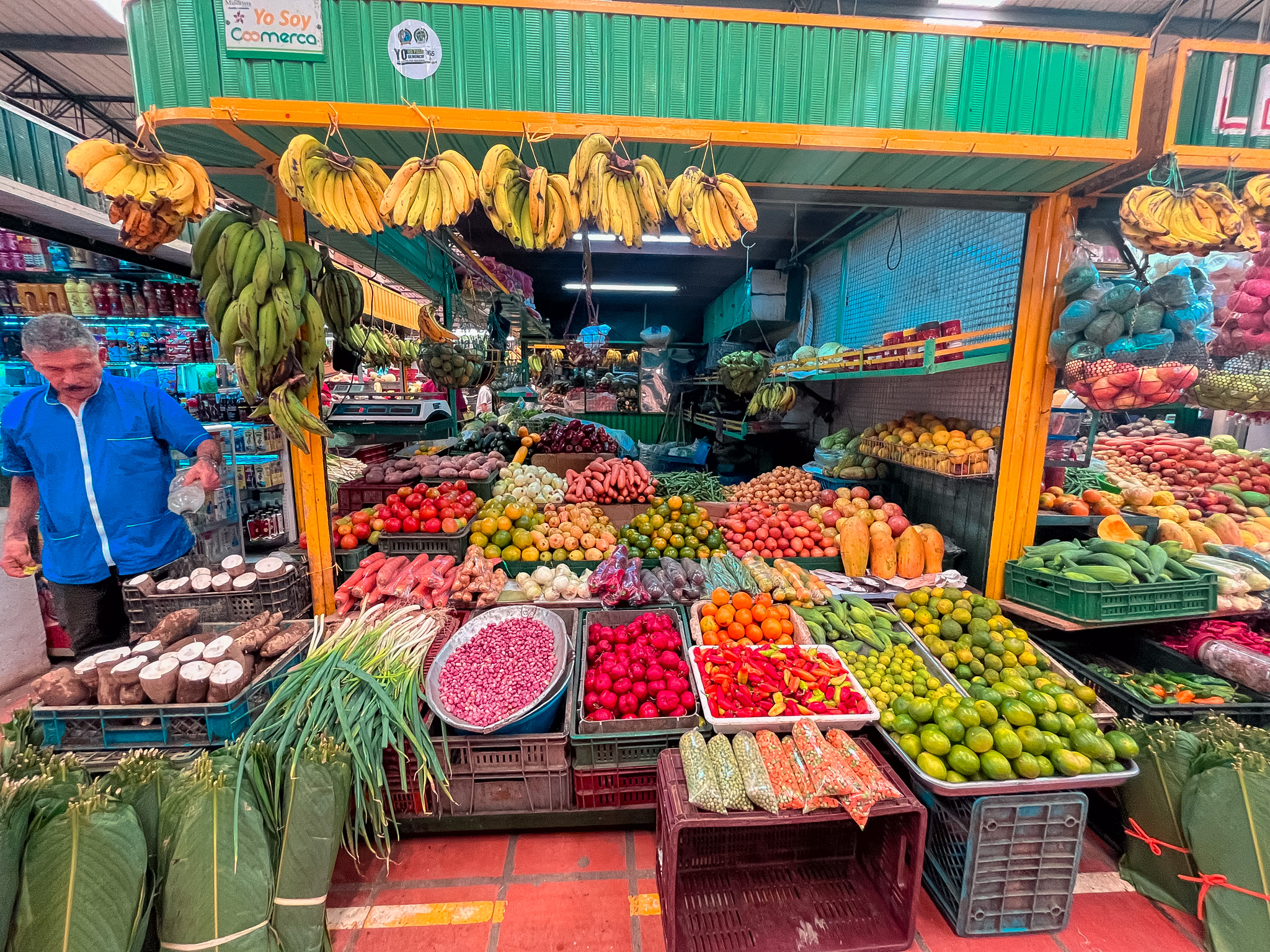The 10 most exotic and delicious fruits from Colombia
Colombia is a paradise for exotic fruits! 🍍🍈🍓 Thanks to its tropical climate and biodiversity, the country offers an impressive 400 different fruits that aren’t easily found elsewhere. You can find these fruits fresh and inexpensively in the markets of cities and towns, and even on the streets. For example, in Cartagena, you can find carts with many tropical fruits. Here’s a list of some of the most striking and delicious:
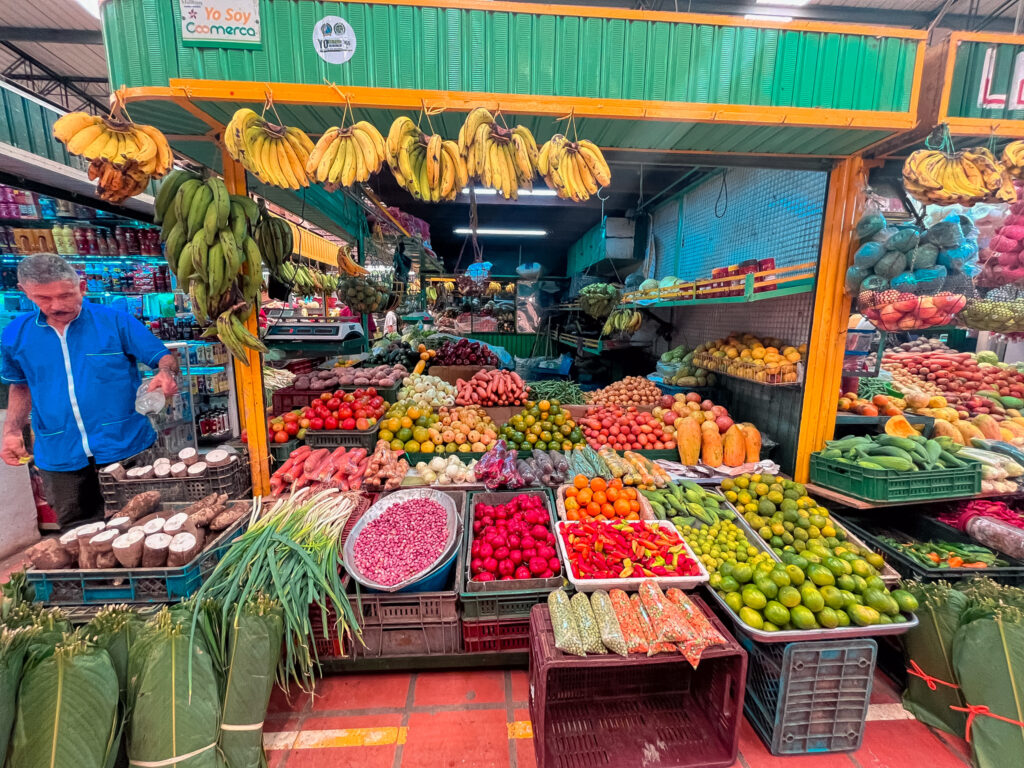
- Lulo
Exotic fruit that looks like it’s from another planet!
The lulo (Solanum quitoense), also known in other countries as naranjilla, is a citrus fruit with an orange peel and deep green flesh, native to the Andes and widely cultivated in Colombia, Ecuador, and Peru. In Colombia, it is particularly popular for making refreshing juices. My grandmother told me that this juice was better than a Red Bull.
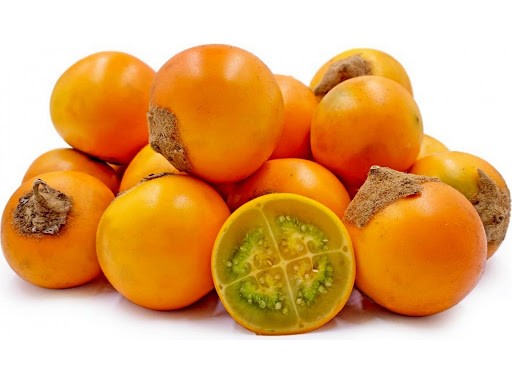
In Colombia, it is grown between 1,200 and 2,000 meters above sea level, mainly in mountainous regions with a temperate climate, such as Nariño, Tolima, Cundinamarca, Boyacá, and Antioquia.
This fruit has many health benefits, including: rich in vitamin C, high in antioxidants, a natural diuretic, digestive aid, and low in calories. In Colombia, we commonly use it to prepare natural juices, homemade ice cream, desserts and jams, tropical cocktails, and gourmet sauces for white meats.
Lulo juice does not require sugar if the fruit is ripe. It is considered a “fruit of the future” due to its export potential. It has been used in cosmetic products for its antioxidant properties. It has its own festival in Colombia: the Lulo Festival in San Juan de Pasto, Nariño.
2. Gulupa
“The purple fruit that chefs in Europe love, but grows in the Andes of Colombia…”
The gulupa (Passiflora edulis sims) is a variety of fruit from the maracuya family (also known as passion fruit), but it stands out for its dark purple rind and more acidic, exotic flavor. It is grown primarily in Colombia and is highly prized by chefs and exporters.

This fruit is grown between 1,800 and 2,800 meters above sea level, in the departments of Boyacá, Cundinamarca, Huila, Antioquia, and Nariño. We can benefit from its health benefits because it contains: Rich in antioxidants, high in vitamins A and C, relaxing properties, natural hydration, and improves digestion.
We use it in various ways: gourmet juices (mixed with other acidic fruits), pastries (mousses, cheesecakes, sauces), exotic cocktails (gulupa mojito, tropical gin and tonic), artisanal ice creams and popsicles, in reductions and vinaigrettes for meats.
The Colombian gulupa is so highly valued that it is exported to Europe, the United States, and Asia as a premium product. It can be stored for weeks without refrigeration thanks to its tough shell. It is a low-calorie but nutritionally dense superfood. Some call it “the purple passion fruit.”
3. Borojó
“⚡ This fruit is NOT suitable for the faint of heart… it boosts your energy, libido, and life.”
Borojo (Borojoa patinoi) is a tropical fruit native to the Colombian Chocó region, especially valued in the Pacific region, where it is believed to have energizing, medicinal, and aphrodisiac properties.
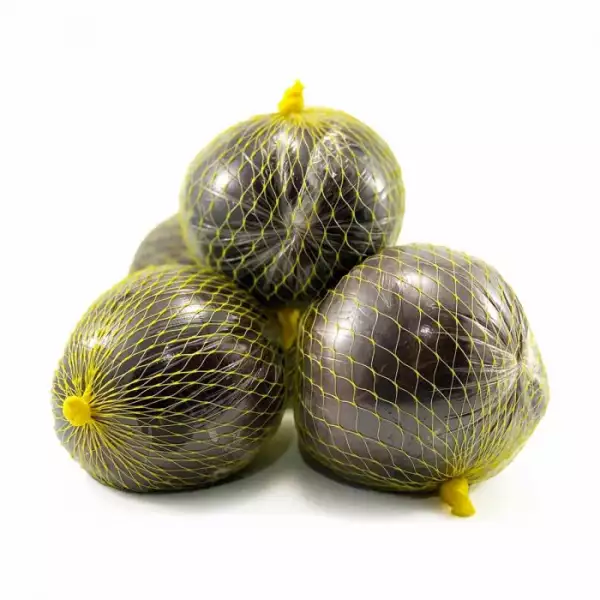
It has a rustic and earthy appearance on the outside, but inside it is a dark brown, acidic, intense, and very dense paste. It is not a fruit to be eaten raw like an apple, but rather to be used for preparing drinks or functional products.
It is grown in the departments of Chocó, Valle del Cauca, Putumayo, and Amazonas, in tropical rainforests, which require warm, rainy climates. This fruit offers benefits for the body, including: a natural energizer, an aphrodisiac, improved concentration, a strengthening of the immune system, and a regulation of metabolism. We use it for: Borojó juice with honey and milk (the famous “love drink”!), functional powders or energy supplements, homemade pastries (energy cakes), fermented foods and homemade wines, as well as natural masks and cosmetic products.
In the Colombian Pacific, it is called “natural Viagra.” It has more than 60 essential minerals and a very high content of polyphenols and amino acids. Afro-descendant communities consider it a sacred fruit. Its name comes from the indigenous language “bora,” and means “fruit with sour pulp.” Its consumption should be moderate, because it really boosts energy!
4. Chontaduro
“Aphrodisiac, ancient, and nutritious? This fruit is eaten with honey and has its own festival 🧡”
Chontaduro (also known as peach palm) is a very special tropical fruit, typical of countries like Colombia, Ecuador, Peru, Brazil, and Costa Rica. It comes from a palm tree called Bactris gasipaes and is highly valued for its flavor, texture, and high nutritional value. High in vegetable protein, it is ideal for vegetarian diets.
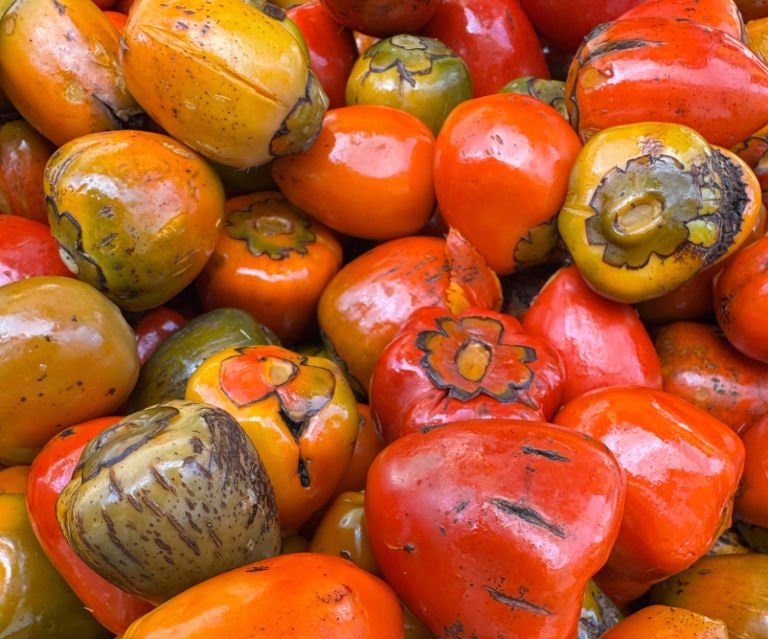
This fruit is rich in fiber, which aids digestion, and also contains essential fatty acids, such as omega 9, and is an excellent source of vitamins A and C, and minerals like calcium, iron, and phosphorus.
Indigenous peoples have cultivated and consumed it for centuries. They even consider chontaduro a sacred food and aphrodisiac.
5. Mangostino
“It looks like a purple jewel… but it hides a blancmange that obsesses chefs and doctors.”
The mangosteen (Garcinia mangostana) is a tropical fruit native to Asia, but also grown in warm regions of Colombia, especially the Amazon and the Caribbean. It has a thick purple rind and juicy, soft, and sweet white flesh divided into segments like those of a mandarin. In Colombia, it is considered a gourmet fruit, and although not as common as other tropical fruits, it is increasingly gaining ground in export and haute cuisine markets.

In Colombia, it is grown in regions with warm, humid climates, good shade, and fertile soils, in the departments of Putumayo, Caquetá, Magdalena, Bolívar, Arauca, Meta, and Valle del Cauca.
It provides significant benefits to the body, such as: xanthones, an anti-inflammatory, a strengthening of the immune system, a support for digestion, and good for the skin. In our country, we consume it in several ways: fresh, straight from the fruit, in juices and smoothies combined with other exotic fruits, in gourmet salads, or as decorative fruit in desserts, as a base for jams, nectars, and yogurts, in addition to being a luxury ingredient in international haute cuisine.
In Asia, it was so valued that only emperors could eat it; in Colombia, it is considered a premium exotic fruit, perfect for export. The rind contains xanthones, a compound studied for its anticancer effects. Its largest segment usually contains a seed, while the smaller ones do not. Finally, it is so tasty that many consider it one of the most delicious fruits in the world!
6. Zapote
“It looks like a sweet potato, tastes like dessert, and eats like avocado: Colombia’s sweetest secret.”
It was a sacred fruit for the Mayans and Aztecs, associated with fertility and abundance. Sapote is a delicious and highly nutritious tropical fruit native to Central and parts of South America, and is highly valued for its sweet flavor and creamy texture. There are several types of sapote.
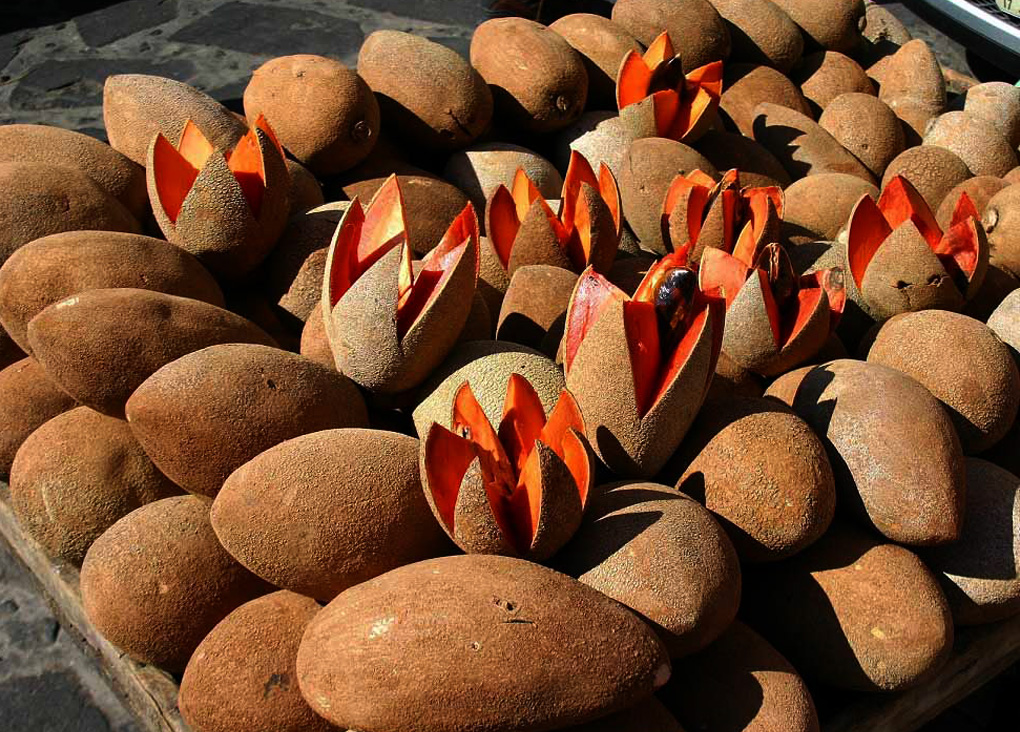
It is high in fiber, which aids digestion, and is also rich in vitamins A and C, ideal for the skin and immune system. It is even a source of antioxidants, especially black sapote, and contains complex carbohydrates, perfect for sustained energy.
It thrives in warm, humid climates, from sea level to 800 meters above sea level, in the departments of Atlántico, Magdalena, Cesar, Meta, and Vichada (Orinoquía).
It can be used in a variety of ways: eaten fresh with a spoon (like a sweet avocado), in juices, shakes and smoothies, ice creams and tropical popsicles, as a base for puddings or creamy desserts, and dehydrated sapote flour for healthy products.

In some regions, it’s called “the natural sweet of the jungle.” Its creamy texture makes it ideal for replacing butter or cream in vegan desserts. The seed, although not eaten, has been used in artisanal cosmetics. Its intense orange color indicates that it is highly rich in antioxidants. It has varieties such as black, white, mamey, and coastal sapote, each with distinct profiles.
7. Copoazú
“White cacao? No… this is cupuaçu: the secret jungle fruit that Europe already wants.”
Cupuaçu (Theobroma grandiflorum) is an Amazonian fruit, a relative of cacao, native to the Amazon region in countries like Colombia, Brazil, and Peru. Its name comes from the indigenous language and means “cocoa of the greats.”
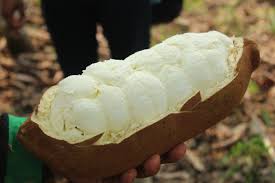
Although it resembles traditional cacao on the outside, its creamy white flesh is what makes it unique: it has a flavor somewhere between pineapple, pear, and white chocolate, with a silky texture and a very intense tropical aroma.
It is a typical crop of the tropical rainforest, growing naturally in the jungle and also in agroforestry systems in the departments of Amazonas, Putumayo, Caquetá, and Guaviare. It has many benefits for the body, including: Rich in polyphenols, a natural stimulant, it improves the skin, provides fiber and protein, and also improves mood.
In Colombia, we find it used in a variety of ways, including: juices and nectars (delicious and energizing!), frozen pulp for smoothies or desserts, cupuaçu butter (like cocoa butter, used in cosmetics and baking), cupuaçu chocolate (yes, it’s made into bars and chocolates), ice cream, mousses, tropical yogurts, and natural cosmetics (creams, balms, soaps).
It’s known as “the white cocoa of the Amazon.” Its seed can be fermented to make Amazonian chocolate. In indigenous communities, it’s a symbol of fertility and abundance. Its butter is softer and more stable than cocoa butter, making it ideal for premium natural products. In international markets, it’s gaining fame as a tropical superfood.
8. Arazá
“It looks like guava, smells like passion fruit, and explodes like lemon. Have you tried arazá, Colombia’s most potent wild fruit?”
It’s a tropical fruit that is conquering palates for its intense flavor, unique aroma, and incredible nutritional benefits. Departments such as Caquetá, Guaviare, Putumayo, and Amazonas are fortunate enough to have Eugenia stipitata growing in their soil. Although it sounds like a woman’s name, it’s actually the scientific name for arazá, given in honor of the Austrian prince Eugene of Savoy, who during his lifetime was a botany enthusiast and collected a large number of plants in his palace in Vienna. It is still little known globally, but in regions like the Amazon, especially in Colombia, Brazil, and Peru, it is considered an exotic gem.

It comes from the Eugenia stipitata tree, a member of the Myrtaceae family (the same family as the guava). It is a yellowish-green, rounded, and very aromatic fruit. Its flavor is a blend of guava, passion fruit, and lemon: acidic yet fruity, ideal for juices and desserts.
The arazá is one of the most promoted fruits in Amazonian bioeconomy projects, as its cultivation is friendly to the ecosystem and can be a sustainable source of income for indigenous communities.
9. Corozo
“It looks like a cherry, it tastes like lemon and wine, and on the Coast it’s a religion: corozo juice is on another level!
Found on the Caribbean and Pacific coasts of El Salvador, Honduras, Nicaragua, Costa Rica, Panama, Colombia, and Venezuela, in dry areas, preferably below 100 meters above sea level, they are endemic to the Tropical Dry Forest and can withstand saline soils.

The corozo fruit is a small, red, and tangy fruit from the corozo palm (Bactris guineensis). It grows in the Caribbean region, especially in warm and humid areas such as Cartagena, Bolívar, and Atlántico.
In Cartagena, the corozo fruit is not just a fruit; it is a popular tradition, especially during the hot months. It is very common to see street vendors with large pots filled with chilled corozo juice, selling it in plastic bags or glasses with ice.

Corozo juice: This is the most typical drink. It is prepared by boiling the corozo fruit, then blending it, straining it, and mixing it with sugar and sometimes a touch of lemon. It has an intense wine-red color and a flavor somewhere between sweet and sour that refreshes the soul. It can also be used to make sweet corozo. The fruit is cooked with panela and spices until it forms a kind of thick jam. It is widely used during Holy Week. Even in some towns like Mompox, corozo wine is being made, and it is gaining popularity among the people of Cartagena.
10. Níspero
“What if I told you that this golden fruit helps your digestion, beautifies your skin, and tastes like sour candy?
Although it’s small, it has a very distinctive sweet and tangy flavor and a host of health benefits: In some cultures, the loquat is considered a medicinal fruit for its soothing effect on the stomach. Its leaves are even used in infusions for coughs and bronchitis.

It is an orange or golden-yellow fruit, oval-shaped, with juicy pulp.
It comes from the Eriobotrya japonica tree, native to Asia but now cultivated in many tropical and subtropical countries such as Colombia, Mexico, Spain, and Venezuela.
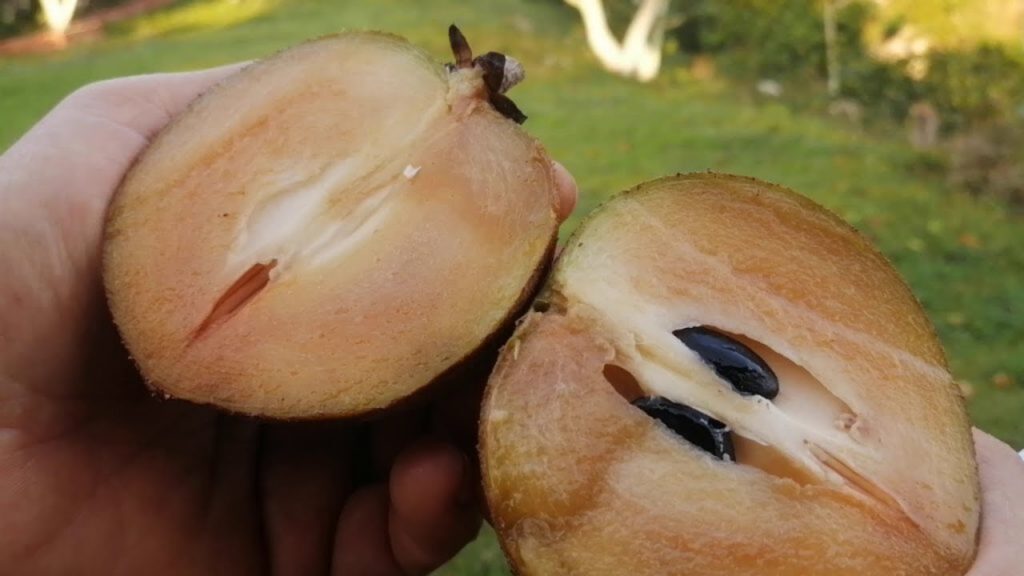
Although it is called “Japanese,” its origin is in China, but it was popularized by Japan. The seed is not edible, but it has been used in traditional medicine for its supposed digestive effects (although caution should be exercised). It is very hardy and can bear fruit several times a year. The loquat tree is also cultivated as an ornamental for its beautiful foliage and flowers. fragrant, it is an excellent fruit for people with mild diabetes, due to its low glycemic index.
What is your favorite fruit? Leave us your comment.
Book your visit tour with Betoma Tours and discover why Colombia is a favorite destination for international visitors!
📧 Contact: info@betomatours.com
📞 Phone: +57 3026626358
📸 Instagram: @betomatours





